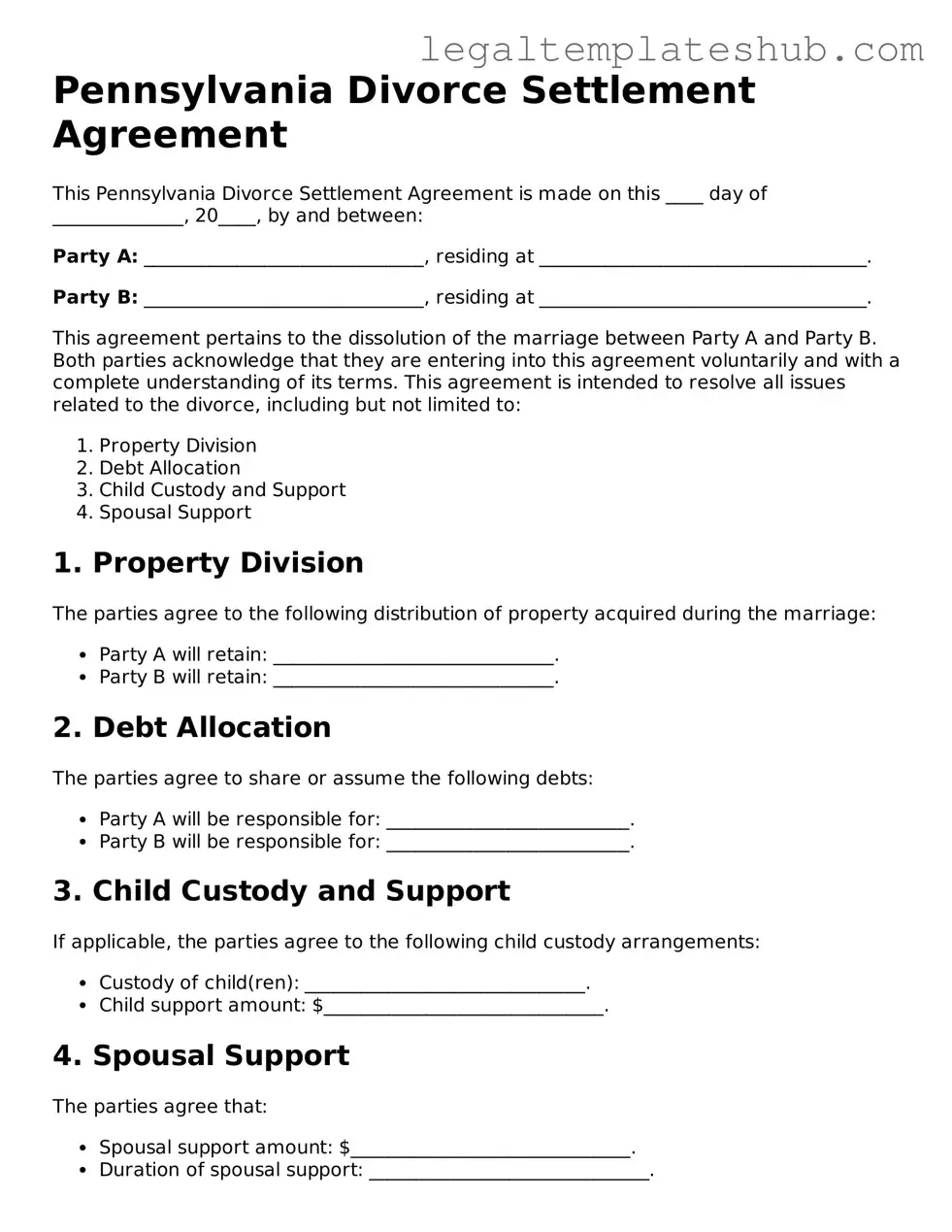Printable Divorce Settlement Agreement Document for Pennsylvania
The Pennsylvania Divorce Settlement Agreement form is a legal document that outlines the terms of a divorce settlement between spouses. It covers important aspects such as asset division, alimony, and child custody arrangements. Completing this form is a crucial step in finalizing a divorce, so be sure to fill it out by clicking the button below.
Access Editor
